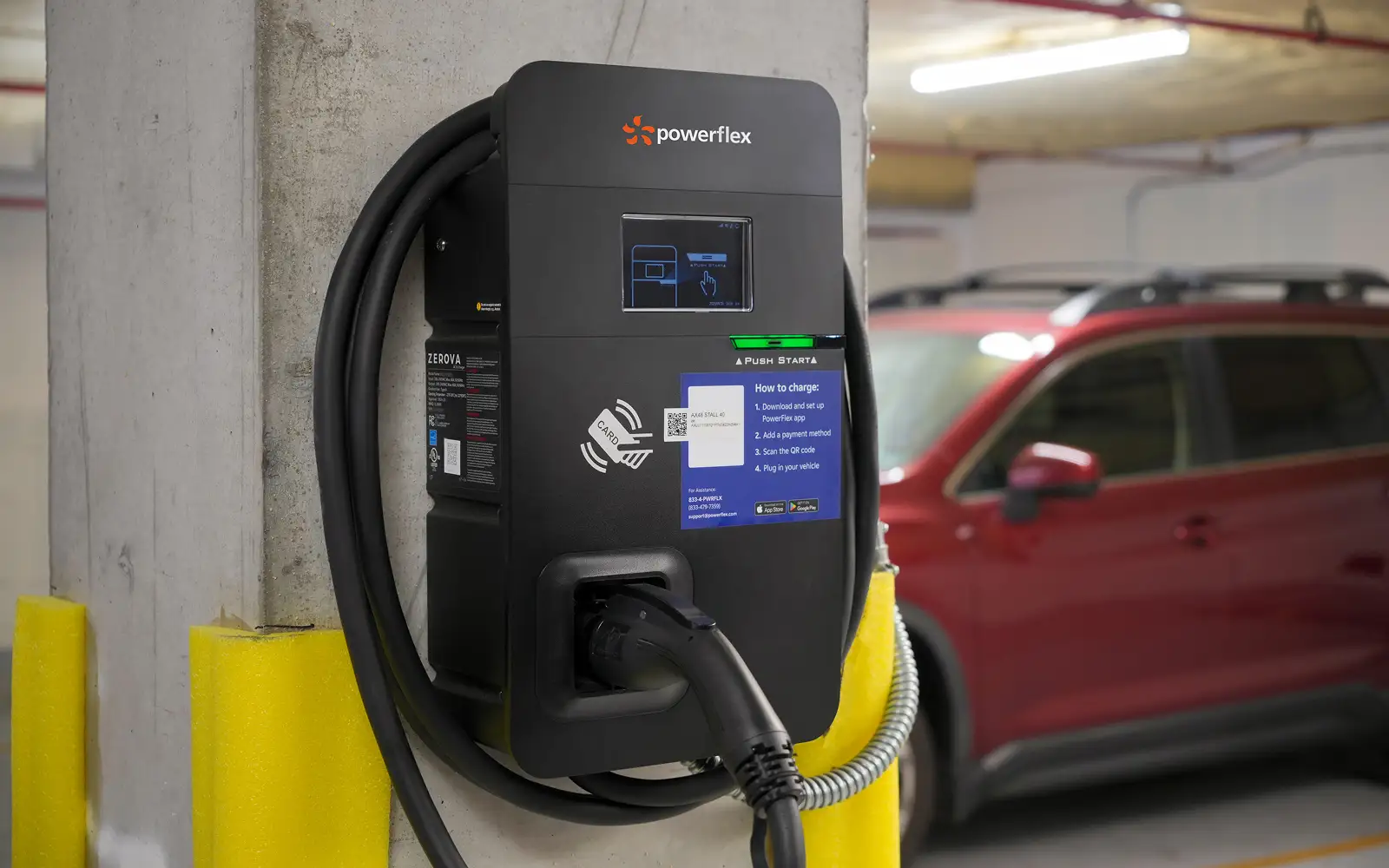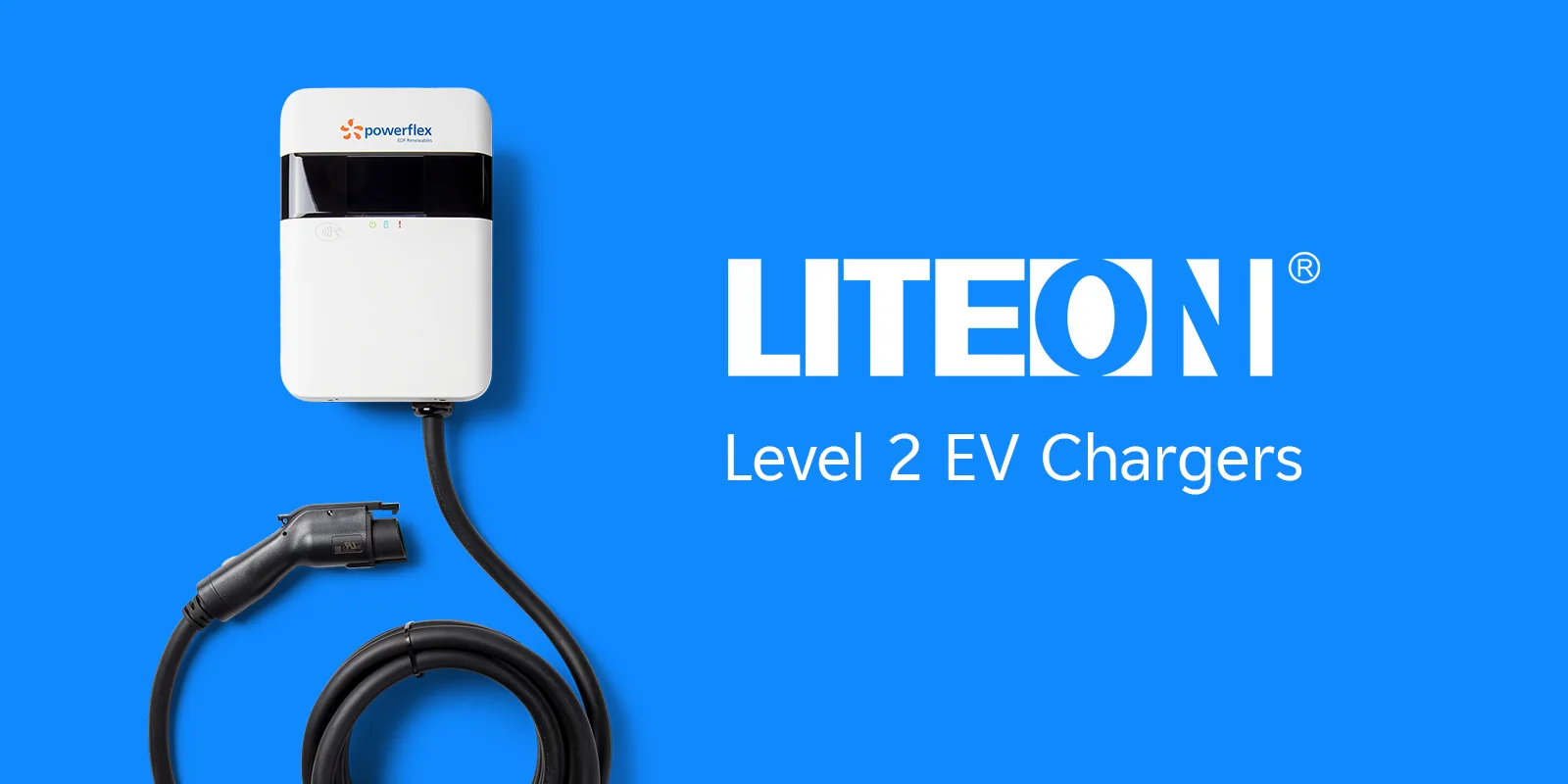How to Cure Commercial EV Fleet Range Anxiety

Commercial EV range anxiety is the concern among business operators that electric vehicle (EV) batteries won’t have enough charge to cover the daily driving demands of their fleets. It’s general consumer range anxiety at scale, as businesses worry their fleets will be stranded in the middle of the job.
This worry over electric vehicle range is understandable given how crucial fleet performance is to the bottom line. However, it’s typically based on an outdated understanding of EV charging infrastructure, battery performance, and technological advancements.
In this post, we’ll explore the various reasons behind commercial EV fleet range anxiety and address them head-on. The good news? There are plenty of ways to alleviate EV range concerns.
What Causes EV Range Anxiety?
For many operators, fears of stranding their fleets are based on two things: They typically worry that EV batteries aren’t adequate for the daily mileage of their fleets, and they’re anxious that drivers won’t be able to find a charger when they need one. But public perception in this area is stuck firmly in the past. In reality, EV range and charger availability have improved substantially.
Commercial EV Range Concerns
Across the board, EV driving range has continually improved in recent years. Battery electric vehicles (BEVs) saw their average range increase from 243 miles in 2017 to 349 miles in 2021 — an improvement of 44%.
Indeed, a typical EV gets anywhere from 200–400 miles on a single charge. Factors like cargo weight and driver behavior all affect the exact range, as we’ll explore later, but that range is sufficient for many typical fleet drives. For reference, some of the most popular fleet EV models in the U.S. have the following average ranges, according to testing by MerchantsFleets:
- Chevrolet Bolt EV: 259 miles
- Ford F-150 Lightning: 240 miles (320 miles with an extended-range battery)
- Rivian R1T/RTS: 270–410 miles (depending on pack size)
EV Charging Infrastructure Concerns
The number of available charging points in the U.S. has exploded in the past decade or more. In 2011, there were only 5,070 charging ports available in charging networks across the country. By 2023, that number sat at over 184,000, and it continues to grow by between 3% and 7% each quarter. According to the Pew Research Center, roughly 60% of Americans now live within 2 miles of a public charging station.
And that’s just at a broader public level. Fleets, specifically, now have access to advanced onsite charging solutions, which operators can use to charge overnight so each vehicle is ready with a full charge for dispatch the next day.
(Related: Infrastructure Planning for EV Fleet Charging)
Factors That Affect Commercial EV Range
Part of the challenge in talking about EV range is that it’s not a fixed number. Electric vehicle manufacturers offer estimated ranges, but the exact distance varies based on everything from ambient temperature to battery age. Let’s look at some of the biggest factors impacting EV range.
External Temperature
All vehicles are affected by the weather, but the performance of electric cars can vary significantly based on where and when you drive. This is due not only to increased heat or A/C usage, which draws more energy from the battery but also to changes in drag at various temperatures.
According to data from Geotab, EV batteries perform 15% better, on average, than the stated range at ideal temperatures of around 68 degrees Fahrenheit. In extremely cold temperatures, battery range may be as much as 50% lower than the stated average. Hot temperatures can also affect battery performance, though less so than cold weather.
Payload Weight
EV batteries are optimized to support a specific load based on carrying capacity. The more weight a car is stowing, the harder the engine has to work and the less efficiently the battery will provide power. That’s why larger trucks tend to have shorter ranges than small sedans.
Driver Experience & Behavior
EV drivers have a significant role to play in optimizing battery range too. Rapid acceleration, faster driving speeds, and harsh braking can all diminish range by using more battery power or regenerating it less efficiently.
Drivers who aren’t used to operating electric vehicles may need specialized training to learn new ways of handling hills, stop-and-go traffic, and general everyday driving to maximize battery range. Telematics systems, which we’ll expand on below, can help fleet managers analyze driver behavior and provide instruction to optimize it for EV fleet driving.
Battery Degradation
Like your smartphone, an EV will perform less efficiently the older it gets. That’s because all rechargeable batteries slowly degrade over time, eventually losing the ability to store their full amount of energy. According to Geotab, a typical battery loses 1.8% of its capacity each year.
However, operator behavior again plays a role in preserving battery capacity. Simple changes in your charging method or how often you charge can impact how well the battery performs as it ages.
How to Solve Commercial EV Range Anxiety
Understanding the factors involved in EV range can help any vehicle owner optimize their driving and charging behavior. But what about at a commercial level? There are several proactive steps operators can take to alleviate EV fleet range anxiety and ease their journey into electrification.
Deploy a Fleet Charging Solution
The best way to mitigate any concerns around EV range in your fleet is to deploy the right kind of charging infrastructure. Choosing the optimal number and mix of chargers will go a long way toward ensuring every fleet vehicle is charged and ready on time.
More than just the chargers themselves, implementing a comprehensive fleet charging solution will allow you to better manage day-to-day charging schedules and optimize power allocation to each charger. A solutions provider like PowerFlex can help you ensure every vehicle is ready to leave the depot with a full charge.
(Related: Fleet EVs: Factors That Affect Your Charger Selection)
Leverage EV Telematics
As noted, telematics can provide an invaluable source of data, analytics, and insights for EV fleet managers who want to maximize range. These systems combine telecommunications and informatics to help manage fleets remotely. Using GPS and other sensors, telematics deliver real-time insights managers can use to coordinate charging schedules and train drivers.
For instance, fleet management software like PowerFlex X™ Fleet+ displays real-time charging status, tracks vehicle state-of-charge while in the field, and improves power-optimization strategies. Robust EV charging data allows fleet managers to ensure trucks make it to home base before they run out of energy.
Plan Routes Around Charging
Another cure for commercial EV fleet range anxiety lies in making simple changes to long-distance routes. This strategy doesn’t have to add time or complicate scheduling — it simply entails planning the optimal route with charging station locations in mind when necessary.
The PowerFlex App makes this easy, helping managers or drivers locate the nearest PowerFlex charging station along the route and plan accordingly.
(Related: Anywhere, Anytime: The Flexibility of EV Charging)
Maintain EV Battery Health
While all EV batteries will degrade over time, there are several ways to slow down the process and preserve battery capacity for longer. For instance:
- Use telematics to monitor battery health and state of charge for your fleet.
- Check EV owner’s manuals for manufacturer recommendations on optimal charging, operating, and battery repair/replacement instructions.
- Don’t let batteries run down to zero or recharge fully. Whenever possible, keeping the charge level between 20% and 80% will maximize battery longevity.
- Try to avoid parking in direct sunlight on hot days, as this heats up the battery and shortens its range. Look for garages, carports, or shady parking spots when available.
- Avoid DC Fast-Charging unless absolutely necessary. Manufacturers note that frequent fast-charging can diminish battery life.
Provide Driver Training
Since EV drivers play such a significant role in managing battery health, fleet managers must include charging and battery management in any driver training program. Drivers should be instructed not only about the above-mentioned battery health measures but also in driving habits that will promote longevity. These include practices like how to drive in stop-and-go traffic and avoiding speeding or rapid acceleration. Even better, drivers can learn how to use regenerative braking, which recharges car batteries while driving.
With proper training, EV fleet range anxiety will diminish across the board. As a study by Recurrent Auto found, range anxiety tends to go down as a driver builds confidence and learns best practices for managing electric vehicles.
Contact PowerFlex to Get Started With Fleet EV Charging
EV range anxiety is a powerful force that has many fleet operators shying away from EV adoption. But the reality of EV range turns out to be far different from our worst fears. With proper training and proactive planning, any team can learn how to maximize driving range and bring the best out of an all-electric fleet.
The easiest way to cure EV fleet range anxiety is by working with a proven partner who can walk you through every step. PowerFlex can help you electrify your fleet and combat range anxiety with dependable, scalable fleet EV charging solutions. We handle all aspects of the project lifecycle, including designing a charging system that will meet the evolving needs of your fleet.
Contact PowerFlex today to plan your EV charging infrastructure and electrify your fleet.



